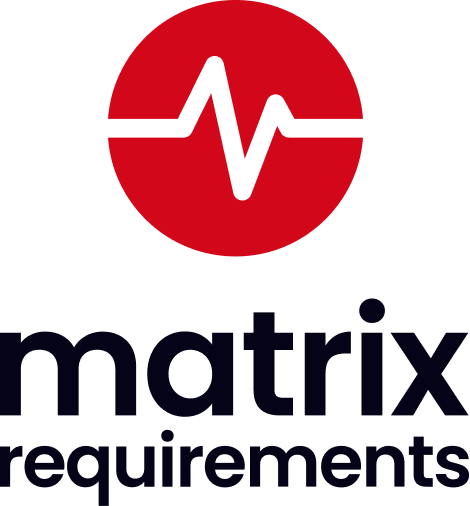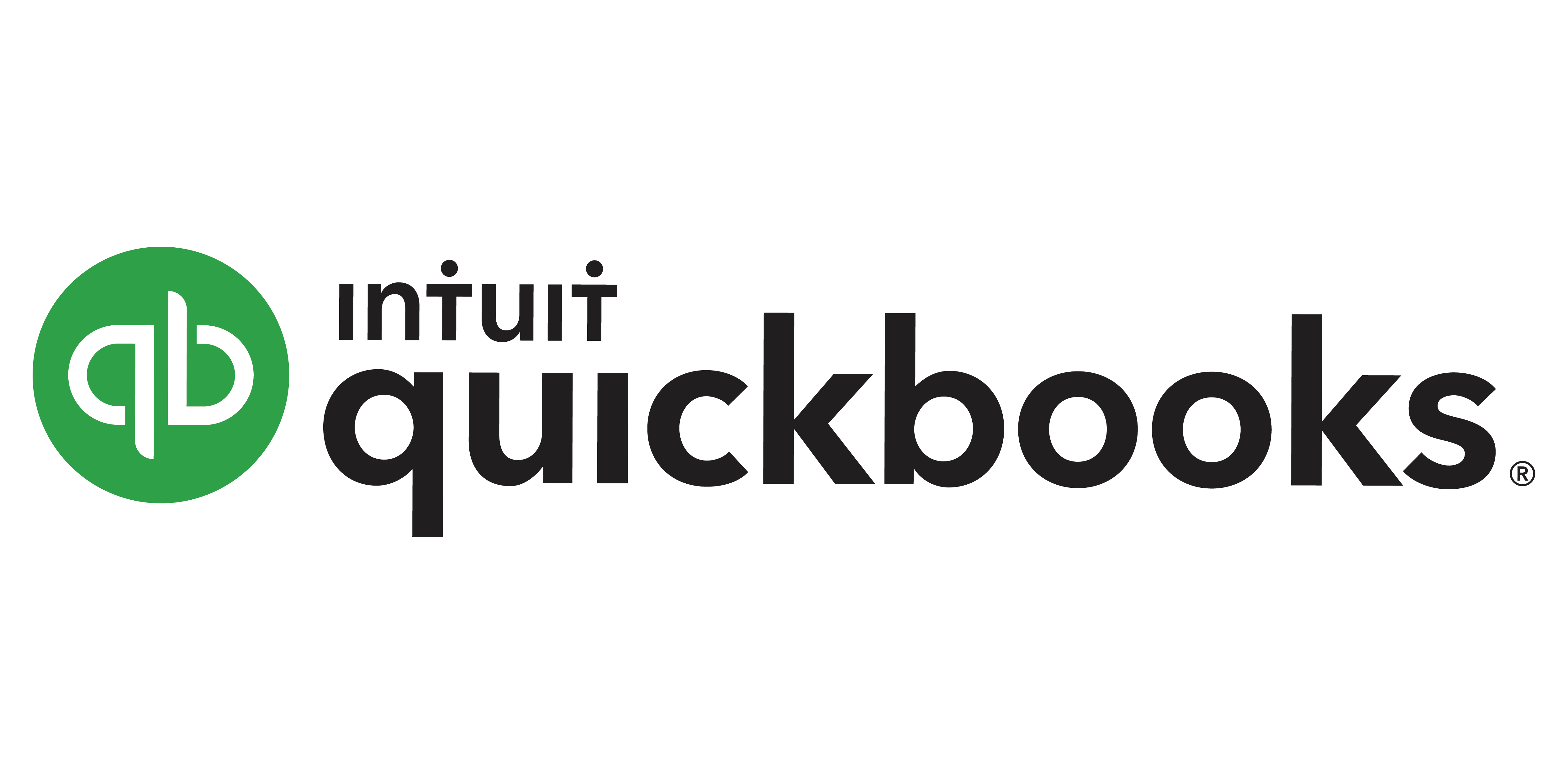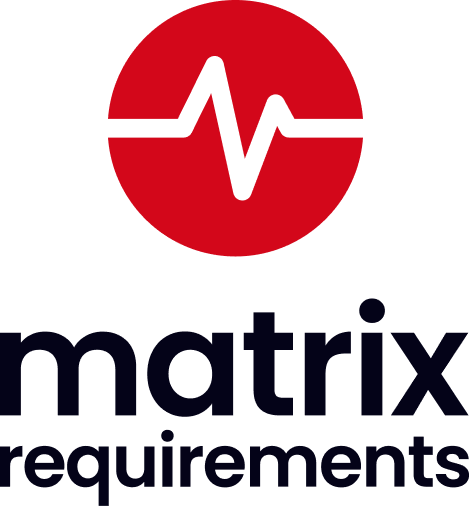What Is Application Lifecycle Management Software?
Application Lifecycle Management (ALM) software is a sophisticated solution that simplifies and improves the software development process. It offers a complete range of tools and functions to assist enterprises in managing the whole lifetime of their applications, from initial concept to final deployment and maintenance.
At its foundation, ALM software seeks to increase productivity, cooperation, and visibility across the development process by centralizing and automating numerous functions and procedures. This involves requirements management, project planning, version control, testing, and release management, among other things. One of the primary advantages of adopting ALM software is that it allows teams to collaborate in a systematic and seamless manner, ensuring that everyone is on the same page and working toward a same objective.
It also aids in the early detection and resolution of any difficulties or obstacles, hence decreasing total development time and expense. Furthermore, ALM software delivers real-time insights and analytics, enabling teams to monitor progress, identify bottlenecks, and make data-driven choices. This not only helps to provide high-quality goods, but it also increases team productivity and project success.
In today's fast-paced and dynamic business climate, where software is critical to driving success, investing in ALM software is a prudent decision for firms seeking to remain competitive. It provides a consolidated platform for controlling the full application lifecycle, which saves time, money, and improves overall quality. With so many features and options available, selecting the correct ALM software that meets your specific needs and goals is important for project success.
What Are the Recent Trends in Application Lifecycle Management Software?
In recent years, there has been an increase in demand for application lifecycle management (ALM) software, driven by increased software development and the requirement for enterprises to provide high-quality applications more quickly. As technology advances, numerous patterns develop that shape the ALM software market's current and future landscape.
One such trend is the use of Agile and DevOps approaches in software development. This has resulted in a higher emphasis on continuous integration, delivery, and deployment, necessitating ALM software that can handle these activities effectively. As a result, many ALM products now include automated testing, code review, and deployment pipelines to enable quicker and more efficient software development.
Another important development in ALM software is the proliferation of cloud-based solutions. With the growing acceptance of cloud technology, businesses are searching for ALM solutions that can be accessible and used in the cloud. Cloud-based ALM software has advantages such as scalability, flexibility, and cost-effectiveness, making it an appealing choice for enterprises of all sizes.
Furthermore, the usage of Artificial Intelligence (AI) and Machine Learning (ML) in ALM software is becoming increasingly popular. These technologies enable ALM systems to evaluate large volumes of data and deliver useful insights and forecasts, therefore enhancing the software development process. AI and ML can also help to automate repetitive activities, allowing developers to focus on more important areas of the project.
Integration with other development tools is also gaining popularity in the ALM software industry. Many ALM products now integrate with popular tools and platforms, including project management, testing, and version control systems, allowing for more efficient collaboration and a more integrated development process. Finally, the need for mobile app development and the expansion of the Internet of Things (IoT) have influenced ALM software developments.
ALM tools are now necessary to handle evolving technologies and allow developers to effortlessly build and maintain applications across different platforms. Finally, current advancements in ALM software reflect the constantly changing environment of the software development business. From Agile and DevOps approaches to AI and cloud-based solutions, ALM technologies are always changing to suit the expectations and problems of modern software development. As a buyer, it is critical to evaluate these trends and choose ALM software that meets your individual needs and goals.
Benefits of Using Application Lifecycle Management Software
Application Lifecycle Management (ALM) software is a critical tool for companies wanting to simplify their software development processes. It is a complete solution that enables enterprises to manage the whole application lifecycle, from planning and development to testing and deployment.
Here are several significant advantages of utilizing ALM software, which make it a worthwhile investment for any firm.
1. Single Management: ALM software offers a single platform for overseeing all parts of the application life cycle. This enables teams to interact more efficiently, exchange ideas, and remain up to current on project progress.
2. Improved Collaboration: ALM software enables teams from many departments and locations to work on a project in real time. This leads to improved communication, fewer misunderstandings, and a shorter development time.
3. Effective Project Planning: ALM software provides sophisticated planning features that enable firms to develop extensive project plans, track progress, and define milestones. This guarantees that initiatives run on time and within budget.
4. Streamlined Development: One of the most significant advantages of ALM software is that it simplifies the development process. It works with a variety of development tools and automates activities, freeing developers to focus on producing high-quality code.
5. Quality Assurance: ALM software has built-in testing and debugging tools, ensuring that programs are properly tested and bug-free before release. This enables firms to provide high-quality items to their customers.
6. Improved Visibility: ALM software gives enterprises real-time visibility into the whole application lifecycle, helping them to detect and fix issues rapidly. This increases overall efficiency and helps firms achieve their business objectives.
7. Improved Security: ALM software allows firms to incorporate security measures throughout the development process, ensuring that security is not an afterthought. This lowers the danger of vulnerabilities and safeguards critical data.
8. Scalability: ALM software is extremely scalable, allowing firms to easily adapt to changing requirements and manage larger projects. This makes it an appropriate alternative for growing enterprises.
Important Factors to Consider While Purchasing Application Lifecycle Management Software?
When it comes to choosing application lifecycle management (ALM) software, there are numerous critical elements to consider. This software is essential throughout the software development process, from planning and development to testing and deployment. As a result, it is critical to thoroughly assess several possibilities and select the one that best meets your organization's requirements.
Here are some crucial aspects to consider while selecting ALM software:
1. Integration Capability: ALM software should be able to work smoothly alongside your existing tools and processes. This encompasses development tools, project management software, and bug tracking systems. This provides a steady flow of information while lowering the chance of mistakes and inconsistencies.
2. Support for Various SDLC approaches: Organizations may use multiple software development lifecycle (SDLC) approaches, such as Agile, Waterfall, or DevOps. It is critical to select an ALM solution that supports your preferred approach and includes the required features and functions to speed the process.
3. capabilities and Functionality: Before making a purchase, carefully consider the ALM software's capabilities and functions. Some essential capabilities include requirements management, version control, automated testing, reporting, and communication tools. Also, examine your organization's particular requirements and select a tool that includes the functionality required to support your procedures.
4. Scalability and Customization: As your company expands, your software development process may change. It is critical to select an ALM product that can expand with your organization and provides customization choices to meet your unique requirements.
5. Security and Compliance: Because ALM software handles sensitive project and customer data, security and compliance must be considered while making a purchase decision. To keep your data safe, make sure the product adheres to industry-standard security measures and follows all applicable rules.
6. Pricing and Cost: ALM software has a variety of pricing choices, including per user, per project, and subscription-based. Consider your budget and select the optimal price plan for your organization's needs. Also, consider any additional expenditures, such as training and support fees.
7. Usability and Training: The ALM solution you select should be user-friendly and simple to use for your team. It should also include adequate training and assistance to enable your staff quickly adjust to the new technology and take use of its advantages. When selecting ALM software, consider these critical considerations to ensure that you choose a platform that meets your organization's goals and helps streamline your software development processes. Evaluate numerous choices, read reviews, and request demonstrations to make an informed selection and further your software development career.
What Are the Key Features to Look for in Application Lifecycle Management Software?
When looking for Application Lifecycle Management (ALM) software, there are numerous critical elements to consider before making a purchase. These features not only improve the program's usability and efficiency, but they also contribute to the success of your organization's software development process.
The following are the key features to look for while assessing ALM software:
1. Collaboration and Communication: ALM software should make it easier for team members and stakeholders to collaborate while also providing a centralized communication platform. Look for features like online chat, alerts, and real-time updates to ensure that all stakeholders can communicate and collaborate efficiently.
2. Project Planning and Tracking: A decent ALM software should have capabilities for project planning and tracking, such as task creation and assignment, deadline setting, and progress tracking. It should also support agile approaches like Scrum and Kanban, which help to make the development process more efficient and adaptable.
3. Integration Capabilities: Look for software that can integrate with your current tools and systems, such as bug tracking, version control, and project management software. This will provide a smooth workflow while eliminating the need for manual data transfer.
4. Requirements Management: ALM software should offer functionality for managing requirements, such as recording, prioritizing, and monitoring changes to requirements as they occur throughout development. This ensures that all stakeholders have a clear grasp of the project's needs, which contributes to its success.
5. Test Management: Testing is an important element of the development process, and ALM software should include tools for managing and carrying out tests. Look for capabilities like test case management, automated testing, and integration with testing tools to guarantee a thorough testing process.
6. Reporting and Analytics: The ability to create reports and analyze data is critical for assessing project progress and finding areas for improvement. Look for software with customisable reporting and analytics features to track project progress and detect possible bottlenecks.
7. Security and Compliance: Security is a primary issue in any software development process, therefore select ALM software that prioritizes security and compliance. Consider features like user access restrictions, data encryption, and compliance with industry standards like GDPR and ISO 27001. When researching ALM software, consider these essential qualities to choose the solution that best matches your organization's goals, encourages collaboration and communication, and optimizes the software development process.
Why Do Businesses Need Application Lifecycle Management Software?
Application Lifecycle Management (ALM) software is an essential tool for firms who want to optimize their development process, boost collaboration, and improve software quality. In today's fast-paced and competitive industry, firms must constantly deliver high-quality apps to stay ahead of the competition.
This is where the ALM software enters in. First and foremost, ALM software offers enterprises a consolidated platform for controlling all stages of the application development lifecycle, from idea to deployment and maintenance. This reduces the need for several tools and systems, resulting in reduced complexity and increased efficiency.
With all data and procedures in one place, teams can simply assess project progress, identify bottlenecks, and make required changes to stay on schedule. One of the most significant advantages of ALM software is its capacity to enhance team cooperation. Real-time communication, version control, and job assignment enable teams to collaborate effortlessly and minimize misinterpretation.
This leads to speedier project completion, fewer mistakes, and more productivity. Furthermore, ALM software enables firms to standardize and automate their development processes. This not only provides consistent and high-quality results across projects, but it also saves time and effort on manual operations.
Furthermore, automation allows developers to focus on more complicated and crucial activities, hence boosting the quality and usefulness of their programs. Another important feature of ALM software is its extensive testing and quality assurance capabilities. With the increasing complexity of software and the growing need for perfect apps, ALM software assists teams in extensively testing their code and identifying problems or vulnerabilities early in the development process.
This lowers the likelihood of costly rework and assures a high-quality finished product. Furthermore, ALM software helps firms get useful insights and data into their development processes. This allows firms to discover areas for improvement, optimize their process, and make data-driven choices about future initiatives.
How Much Time Is Required to Implement Application Lifecycle Management Software?
The deployment timeframe for Application Lifecycle Management (ALM) software will differ based on a number of factors. These include the organization's size and complexity, the number of users, and the exact features and capabilities that will be deployed. However, according to industry norms and best practices, the average installation time for ALM software is between 3 and 6 months.
The first step in installing ALM software is to thoroughly examine the organization's needs and requirements. This includes evaluating the present processes, identifying pain areas, and establishing the essential features and functions that will add the greatest value to the firm. After the evaluation is completed, the next step is to create an implementation strategy.
This plan should specify the activities and dates for each stage of the implementation process, including data transfer, configuration, testing, and training. It is advised that key stakeholders and end users be included in the planning phase to guarantee a seamless and effective implementation. The real installation process often begins with data migration, which involves transferring current data and processes to the new ALM platform.
This can take anything from a few days to several weeks, depending on the size and complexity of the data. The program will then be adjusted to match the organization's unique requirements. This involves establishing processes, developing custom fields, and arranging integrations with other tools. The time necessary for this step will be determined on the amount of customization and complexity required.
Once the program has been setup, it should be thoroughly tested and quality assured to verify that it works as intended and satisfies the needs of the company. This can take anything from a few weeks to several months, depending on the size of the company and the complexity of the implementation. Finally, end-user training and onboarding are critical to a successful ALM deployment.
This may include in-person or online training sessions, as well as user manuals and tools for continuing support. The time necessary for this step may vary depending on the number of users and their familiarity with the program.
What Is the Level of Customization Available in Application Lifecycle Management Software?
One of the most important considerations when selecting application lifecycle management software is the amount of flexibility provided. This component has a significant impact on the efficacy and efficiency of your software development process, thus it is an important factor for any purchase. First and foremost, recognize that not all ALM software provides the same amount of customisation.
Some may provide more extensive possibilities, whilst others may have less capabilities. It all comes down to striking the perfect balance for your individual requirements and process. The amount of flexibility possible in ALM software varies in numerous ways. One issue to consider is the flexibility to tailor various stages of the application lifecycle, such as requirements management, development, testing, and deployment.
Some software may only provide customization choices for specific phases, but others may provide modification throughout the entire process. Another factor to consider is the level of personalization at each step. This can include simple features like custom fields and labels, as well as more complex capabilities like custom workflows and tool integration.
It is critical to examine your team's requirements and decide which level of customisation would best assist your development process. Furthermore, the amount of customisation might vary depending on the ALM program being utilized. For example, on-premise systems may provide more comprehensive customization choices than cloud-based solutions, which frequently use a more standardized approach.
Finally, the amount of customization possible in ALM software may significantly affect the flexibility and productivity of your software development process. Consider your team's goals and operations, then closely assess the customization possibilities provided by various software solutions to determine the best match for your firm.
Which Industries Can Benefit the Most from Application Lifecycle Management Software?
Application Lifecycle Management (ALM) software is an invaluable resource for companies in a variety of sectors that rely largely on software development and delivery procedures. ALM software automates and unifies these processes, allowing enterprises to create high-quality, compliance, and timely software solutions.In this buyer's guide, we'll look at how various sectors might benefit from utilizing ALM software.
1. IT and Technology: ALM software is most likely to aid the IT and technology industries. As technology advances, organizations in this industry must continually produce new software products and upgrades in order to remain competitive. ALM software provides a consolidated platform for managing the complete product development lifecycle, including requirements management, coding, testing, and deployment. IT and technology firms may use ALM software to increase team cooperation, decrease mistakes, and accelerate time-to-market.
2. Banking & Finance: Where security, compliance, and regulatory requirements are critical, ALM software may be quite useful. These software solutions include capabilities like as traceability, audit trails, and version control, which help companies fulfill regulatory standards and maintain compliance. Furthermore, ALM software promotes communication between development and operations teams, resulting in a seamless development, testing, and deployment cycle.
3. Healthcare: In the healthcare business, where patient safety and confidentiality are paramount, ALM software may aid in the creation of secure and compliant software systems. ALM software, with its capabilities for requirements management, test management, and change management, enables healthcare firms to adhere to tight laws and standards during the software development process. It also provides a faster reaction to changes and upgrades, resulting in improved patient care.
4. Retail and E-commerce: Providing high-quality software solutions is critical for consumer satisfaction in the retail and e-commerce industries. ALM software can help these firms manage their software development and delivery processes more efficiently. They may track and manage requirements, test codes, and defects from a single platform, guaranteeing that software products are dependable and error-free.
5. Manufacturing: The manufacturing business may benefit from ALM software in a variety of ways. As industrial processes become more automated, software plays an increasingly important role in ensuring that operations run smoothly. Manufacturers can use ALM software to manage the complete software development lifecycle for their production systems, including requirements, code, and testing. Manufacturing organizations may utilize ALM software to ensure a more streamlined and effective production process.
Conclusion
To summarize, investing in Application Lifecycle Management (ALM) software is critical to the success of any software development project. ALM software streamlines the whole development process, allowing teams to interact, measure progress, and maintain quality throughout the development cycle. When looking for the best ALM software, keep in mind your team's individual requirements and preferences, as well as the features and capabilities of each solution.
Look for a user-friendly interface, connection with your existing tools, strong testing and tracking capabilities, and the flexibility to expand with your company. While the initial cost of ALM software may appear exorbitant, it may result in considerable long-term cost savings and ROI by decreasing mistakes, speeding up the development process, and increasing overall efficiency.
Take advantage of free trials and demonstrations to completely assess your alternatives and make an informed choice. Remember that customer support is critical in the software sector, so select a provider with a proven track record and accessible assistance services. Choosing the proper ALM software for your team allows you to expedite your development process, enhance communication, and ultimately create high-quality software solutions






















